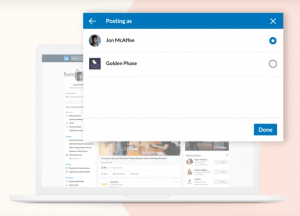Box SVP Sam Schillace shares how he quickly and cheaply experimented on an app no one wanted–that became the basis for Google Docs.
In 2005, along with colleagues Steve Newman and Claudia Carpenter, Sam Schillace created a browser-based word processor called Writely. A Silicon Valley darling, it was eventually acquired by Google and became the basis for Google Docs. Now the SVP of engineering at Box, a cloud storage and file sharing service, Schillace says that despite today’s ubiquity of cloud-based computing, Writely was at first considered a bad idea and a waste of time.

“What I’ve learned over time is that creative, interesting ideas almost always look stupid at first,” says Schillace. “It’s really hard once one of these things emerges to think about what the world was like before it emerged. Now it’s obvious, we’re in the world of the cloud, Box is a cloud collaboration company, this is valued, Google Docs is obviously a good idea and it’s hard to think about it not being a good idea.” At the time, though, the only real dynamic cloud-based application was Gmail, and Office had essentially killed the competition space for productivity tools. “The road from Office was just completely littered with bodies,” says Schillace. “So we were thinking about doing this thing in a browser, with crappy tools that no one has ever seen before, in a competitive area that everyone died when they tried to compete with, why would you do that?”
Schillace believed in the idea and wanted to experiment–but says the key to convincing his colleagues was to get the prototype up and running in a matter of days at almost no cost.
“All of my startups have entailed experiments and trials, and what I’ve learned over the years is you have to make them cheap,” says Schillace. “There’s this activation energy you have to get over, and if this energy is very small, if you say I’m not asking you to invest this month, but just a couple of days so we can try something to see how it feels, you have a very different ability to do that experimentation.”
To do this with Writely, Schillace says he used pieces of other projects in progress, as opposed to building the idea from scratch. “It’s a habit that I have after years of doing this stuff, when my partners and I work on technology, we always try to do it in a way that’s reusable–your build environment should be something you’re comfortable with, turn an old project into a new project and get it up and running immediately,” he says. “We had a lot of pieces lying around that we reused. The first prototype of Writely was up in two or three days. We were working on a distributed bug tracking database, to make a better database for development, completely unrelated to the Writely stuff, but we used that as the basis.”
It wasn’t until the prototype was built, says Schillace, that they realized, “Oh, shit, because of the server, we can both be working on this document at the same time, that’s actually really useful.”
Schillace has carried this philosophy to Box, which has regular hack events to quickly activate new ideas that may suck. “It’s a way of lowering the organizational cost to experiment, and giving people permission to do something that same day without having to ask or politic, just to see what happens,” he says. “We also do these overnight hackathons, which are like sleepover competitions, which is another way to encourage people to take risks and sharpen their tools. You have about 24 hours start to finish, so you want your tools to already be sharp.”
Schillace says that even at companies focused on innovation, it’s hard to convince others of the value of truly new things. “Whenever you see something that’s truly creative or disruptive, it challenges your worldview. And when you’re challenged like that, you have a choice either to accept the challenge, meaning that you are in some way wrong, or reject it, which is saying that the thing itself is wrong. So it’s very rare that people will say, ‘Oh I must be stupid because I didn’t see this,’ so usually people’s first reaction is to reject them.”
But before you give even a few days or dollars to a dubious idea, says Schillace, there are other things to look out for.
“One of the signals is to look for the pattern of how people respond to it,” he says. “If you get a lot of ‘Maybe that sounds okay,’ you probably don’t have a great idea. If what you get is 80% think it’s the dumbest idea ever and should die in a fire, and 20% think it’s the best thing they’ve ever seen, then you’ve probably got something.”
(444)






